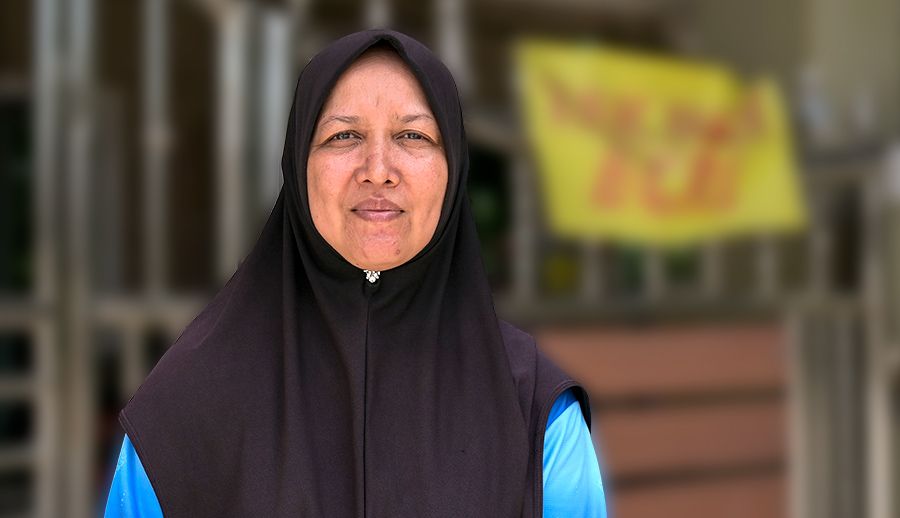Progress, but at what cost?
But building such a large infrastructure project rarely comes without controversy.
Perhaps the starkest images have been of floods residents say only came about after ECRL construction started.
Near the northern end of the ECRL network, some residents in a village in Pasir Puteh, Kelantan, have had to find ways to stem the flow of water through their homes and places of business.
Kasiah Mat Isa, who runs a small convenience store in Kampung Permatang Sungkai just next to the ECRL tracks, said her village was flooded twice in July 2024 during heavy rain.
The 43-year-old feels the construction of the tracks, which are on a raised platform, created a physical barrier that stops rainwater from flowing smoothly through her village, causing it to pool there.
As the monsoon season landed, some residents in Kampung Permatang Sungkai showed how the floods had damaged their furniture and appliances, complaining they had yet to get any of the compensation they were promised.
At the other end of the network, in Port Klang, some residents were forced to give up their homes to make way for the ECRL.
Zuriana Zulkifli, 44, is among the Selangor residents who have had to relocate. She lives with her husband – a port worker – and five children for eight years near Port Klang in Taman Sungai Sireh, where 89 homes will be demolished for ECRL tracks.

I grew up here, so if possible I want to live here all my life. I like the kampung feel and there are mosques and schools nearby.
Zuriana Zulkifli, 44
“But if I refuse to move, I will be prosecuted,” she added, standing in front of her gate with a sign that said “no to ECRL”.
As a whole, the ECRL has also raised the larger question of whether it will deliver on the promise of spurring investment in the less-developed regions it runs through, especially given the development cost.
The project, largely funded by a Chinese bank, has even raised concerns in some corners about a Chinese debt trap.
And with the ECRL expected to be used more for transporting goods than people, experts have questioned whether it will be profitable enough to let Malaysia repay the hefty Chinese loan that funded 85 per cent of the estimated construction cost.
Those involved in the feasibility studies for the ECRL remain confident.
Ragu Sampasivam, chief operating officer of the East Coast Economic Region Development Council, a government agency, said he is certain investors will find the ECRL attractive in helping them shuffle goods along new bases and ports on the west and east coasts in a faster and greener way.
He added that the government aims to make tickets affordable to boost usage among Malaysians.
We would like to price tickets in such a way that it becomes appealing for people to use it. And to me, as long as I don’t lose money in operating, it’s fine.
Ragu Sampasivam
“Once you start filling up the train, more people use it, then let’s talk about profit later.”
The ECRL is 78.5 per cent complete as of January 2025, according to reports.
But with the launch date of the ECRL slightly less than two years away, there is still scope for things to evolve.
In February 2025, ECRL owner Malaysia Rail Link received approval to modify the section from Jalan Kastam to the two ports in Port Klang, from a single-track dual-gauge system to a double-track configuration.
This allows the ECRL and existing KTMB railway lines to operate independently of each other, and increase cargo capacity to both ports, said Transport Minister Anthony Loke.
This change in the system would not require additional funding nor increase the overall development costs of the ECRL project, he added.
Even with these changes, Loke reassured people that the ECRL is set to open in January 2027. And for residents and companies hoping to take advantage of this new railway, having it on track shows there is light at the end of the tunnel.
Read the full article here

